Learning Objectives
- Show Planning
- Deconstructing Podcasts to understand podcast producing
- Writing scripts for podcasts
- Show opens with creativity {audio examples}
- Bumpers for podcasts {audio examples}
- Show ends with a call-to-action {audio examples}


Normally, podcasts are edited programs. Interviews sound live because they’re recorded “live-on-tape” and edited for time and clarity. Taping the interview can be comforting to guests and new hosts. It also means you can get rid of egregious stumbles and drawn-out stories. But don’t worry if you make a few minor flubs; the audience also appreciates spontaneity.
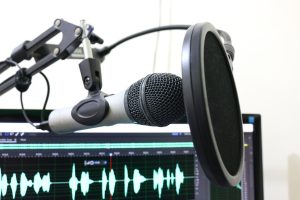
Podcast show planning involves three overlapping stages that call for creative storytelling and are covered in this chapter.
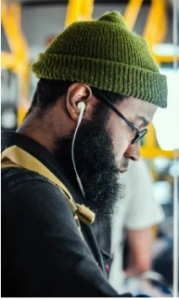
Pre-Production is the show planning stage where you decide the podcast title, description, cover artwork, show type or format, and show length.
Production is script writing – whether it is entirely scripted, or sketched out as bullet points. It is also the recording and editing of interviews as well as finding any other appropriate sound that will enhance the podcast. The sound could be a person-on-the-street interview, a clip from a news report or a street protest. Radio reporters excel at getting sound from the scene and while the subject is doing something — collecting oysters during a harvest or planting a sustainable garden. Interviewers can ask the subject to describe what they are doing and conduct all or part of the interview while on location.
Post-Production involves additional editing and sound mixing, as well as deciding on further story transitions, use of music, publication, and show promotion.
You’re probably creating your own podcast because you’ve been a fan of listening to podcasts.
But when it comes to planning your own show, the best thing you can do is to listen to other podcasts. See Ch. 1 for unique ways on how to find podcasts beyond just listening apps. This kind of listening isn’t just for enjoyment, however, you need to listen to carefully deconstruct how shows are put together. This will help you decide your own style, budget, and production capabilities.
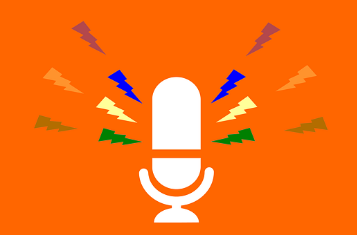
If you want to create a podcast, then listen to shows in the same category (fiction or nonfiction); the same genre (news, true crime, pop culture, religion) etc., and the same format (interview, monologue, co-host, roundtable, storytelling/investigative) to see how others have put together their shows.
It’s helpful if you can find a transcript for the podcast but you can also use technology to quickly transcribe a show, as outlined in Ch. 9.
Listen carefully & take notes to decipher how podcasts are put together:
Scripting should always be done for podcasts to some degree. It’s a guide for getting across your key message while also leaving room for your personality. Even shows that seem spontaneous have usually been planned and written out and take one of these various forms:
Word-for-word Script – you write the way you talk and read the script. This makes sure you cover specific points and cuts down on production time.
Ad-lib – you wing it at the moment. Pros can make this seem easy but in reality, it’s very hard to do well without lots of experience.
Outline – an outline is a hybrid between the script and ad-lib; with bullet points for key talking points and a plan to smoothly transition from one area to the next.

Scripting keeps interview podcasts on track, allowing the host to fill in the gaps when a story goes too long or sideways. This is where the hard work of producing a podcast comes into play because a well-edited podcast takes time for the producer-host to accomplish, doing the interview is just the starting point.
Public radio uses the term “driveway moment” to describe listeners who arrive home but stay in their cars to hear the end of a story because it’s so captivating. But achieving such a storytelling moment doesn’t come without a lot of hard work in scripting — and involves writing a setup to the story to build interest, having strong story elements to solidify flow, with a strong lead and a satisfying ending.

Audio storytelling is fueled by four elements that need to work together – words, your voice, audio sounds (music to sound effects or natual sound), and editing. All four need to work together, meaning that when you write an audio script you are simultaneously using all four elements – words written using your voice with audio sounds, and edited as a whole. When done well it makes for a very rich storytelling experience for the listener.
Write short sentences and talk out loud as you write because we write differently than we speak and it helps not to sound scripted. It works to do this. Remember that your show is for the ear, not the eye.
Repeat for emphasis. If you want a certain point to clearly stand out to an audience you can repeat what is said in a sound clip, as Rachel Maddow does in her podcast, Deja News.
Podcast scripts are written one step at a time or in chunks:
There should be a script for a short, standard pre-produced show open with music and narration that says the show’s name and description. This open is heard on every show and works well as a way to make clear to new listeners what the show is about.
It is often followed by a separate episode introduction which introduces the topic of the day and guest introductions. Some podcasts have only an episode open.
Once an interview is done, the host/producer listens to the audio and decides what parts of the interview to use, and writes a script. Most good interviews are not used in their entirety but are edited to sustain interest, provide greater clarity, and perhaps for time. Think about how to transition from one interview to another, or from one topic to another.

Every podcast needs a show rundown that indicates the order of show elements. The rundown assigns approximate times for each show element, which is vital to keeping a standard show length.
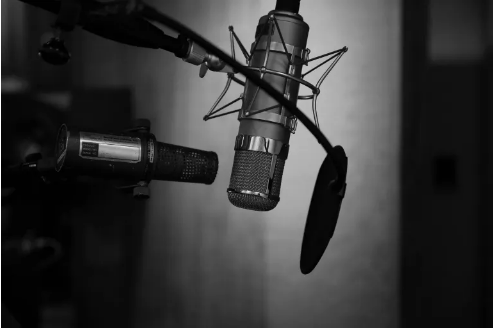
If your goal is to create a 10:00 podcast then plan approximate times:
:25 Pre-produced standard podcast open
:15 CLIP #1 Pull a compelling clip from the interview to tease the audience about what is coming up on the show
:45 Episode open & guest introduction
2:30 Guest Interview
:15 Host narration
:35 Guest reads a clip from a book she authored
:25 Host narration
1:25 Guest Interview
:10 GUIDEPOST or BUMPER
:15 PSA (Public Service Announcement or paid ad)
:20 Host narration
1:20 Guest Interview
:20 Host CALL-TO-ACTION
:15 Host thanks & Bye
—————————————-
9:15
BEGINNING: Give clear reasons to listen
MIDDLE: Deliver on what you promised
END: Thanks for listening & Call-to-action
Resumes are written for the eye so be sure to rewrite any guest bio for the ear. That means writing shorter and sharper – include major achievements of the guest related to your episode topic but don’t list everything. Most importantly, read the introduction out loud to see how it sounds and how long it takes. Additional details can always be put in episode Show Notes on your website.
A podcast rundown is not as rigid as the “clock” that runs commercial and public radio programming — that template follows a strict pattern of when news, traffic, and other segments are repeated on an hourly basis. But podcast listeners also expect some routine in their listening habits.
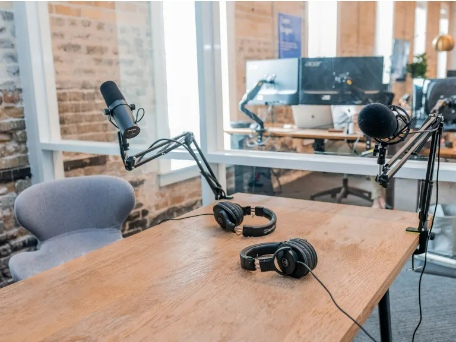
Music with pre-produced standard open – “This is the XXXXX podcast, a show about XXXXX,” and then the music comes up at full strength.
EPISODE Introduction by host. “Welcome back to another episode of XXXXX…(podcast name) I’m your host XXXXX.” Do an episode signpost on what to expect. “On today’s episode, we’ll talk about some of the more unique animals being adopted: bearded dragons, hedgehogs, miniature donkeys … which ones are really safe to be home pets? How hard are they to care for? Are they legal?”
Music bumper
Topic #1: Introduction of guest by host. Avoid reading any long bio the guest may have sent because it will sound stuffy and stilted because it’s usually meant to be read and not heard. Rewrite it to be short and clear for the ear. You can put their full credentials on your website.
Interview with guest #1
Topic #2: Introduction of second guest by host
Interview with guest #2
Music bumper
Topic #3: Host offers final thoughts or on to another interview
Show End; host thanks the audience, guests; promos next show
Music close
As a podcast creator, think about what kind of sound you can get to help tell the story beyond just words from an interview. Getting that additional sound to help immerse the listener can be one of the most challenges and time-consuming aspects of podcast producing.
In the nine-episode series, Welcome to Provincetown, the producer/host describes her arrival in the tiny beachfront town on the extreme tip of Cape Cod using short, simple words that paint a picture in the mind of the listener.
Use Natural Sound Full Up: The podcast also has a wealth of sound coming from the environment which helps in making the listener feel like they are on the scene as the story unfolds.
Use free archival audio. In the Slate series, Slow Burn-Roe V Wade, the podcast producers make use of historic audio to tell the story of how the historic Roe decision came about in the early seventies.
The Library of Congress has free historical archival audio, as does C-SPAN with 250,000 hours of online content of presidential speeches, Congress, and the Supreme Court. The TV News Archive has searchable broadcast news beginning from 2009 and there are sports broadcast highlights. Additional links can be found here.
Use sound from events like protest rallies and demonstrations. If you were doing a podcast about gun control you could get sound from events like the massive gun reform rally in Washington, D.C., led by students from Parkland, Florida.
Do a person-on-the-street interview. You could gather opinions from people on the street, then include the best quotes to help the audience feel more of a part of your podcast. In a podcast about whether the shopping mall is dead after 70 years, Decoder Ring offers some fond memories from Americans.
Ask your guests for audio clips. If you’re interviewing an author, ask them to do a short reading from the book. If you’re profiling a musical artist, get some audio of their performance.
Use music to fit the mood of your podcast. Nick Quah, host of Servant of Pod, says he considers S-town to be the best example of music fitting the story being told.
Use signposts to guide the listener. Because this is audio, we don’t see visual cues or headlines to guide us, so help listeners by telling them what’s coming up next. Listen to Quah as he transitions from one interview to promoting an upcoming interview.
You can use a signpost to move a story forward in time. For example, if you had a quote from a reporter who’s talking about how he covered a dangerous virus outbreak while on assignment as a foreign correspondent.
Interview guest: “I watched the streets of Wuhan, China, go empty, then the canals of Venice and the piazzas of Rome, too.”
Host voiceover: “Then Seth Doane got the news he didn’t want to hear, that he had tested positive for the coronavirus.”
Interview guest: “For me, the symptoms have been manageable, which is fortunate in a country where hospital systems have been overwhelmed.”
The decision on how to open your podcast can make or break building an audience because listeners decide within minutes whether to invest their time or move on. NPR One found that most podcasts lose 25-35 percent of the listening audience in the first five minutes.
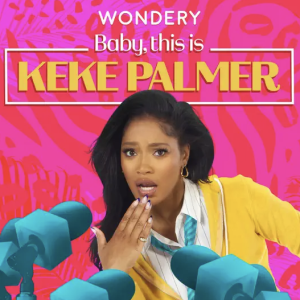
The podcast, Baby, This is Keke Palmer has a unique opening where the actress and TV personality voices a note in her diary related to the show’s content, and then sings an original song opening.
Don’t just wing it when starting your show; take the time to plan things out. But, also don’t be so tied to a script that you sound robotic.
Keep in mind that most shows really have two opens – starting with the standard pre-produced open with music and narration that says the show name and tagline or description that explains what the show is about.
The second open can be the episode open that explains what the content for the day will be, the host’s name, and who the guests will be. Episode opens can have some very creative and different styles, as explained below.
The New York Times 20-minute podcast The Daily has an audience of 4 million listeners per day.

Host Michael Barbaro discusses the news of the day. His show opens with the podcast music theme and the host’s name introduction.
Barbaro sets up the topic to be discussed using clips from news coverage about the issue. The sound helps set the scene for the listener and pulls them into the story because they’re experiencing the event and not just being told about it. It is followed by an edited interview with a reporter who covered the story.
The episode is The Overlooked Scandal of Priests Sexually Abusing Nuns.
TRANSCRIPT:
:11 MUSIC UNDER HOST INTRODUCTION: “From the New York Times, I’m Michael Barbaro. This is The Daily…”
:05 MUSIC FULL UP
:16 HOST NARRATION WITH MUSIC UNDER “Today, the pope is acknowledging for the first time the persistent problem of nuns being sexually assaulted by priests … why it took the Catholic church so long to recognize this group of victims …”
:06 MUSIC FULL UP
:04 HOST NARRATION “It’s Thursday, February 7th”
:19 SOUND FULL UP OF APPLAUSE AND POPE SPEAKING, THEN REPORTER “So earlier this week Pope Francis spent three days in the United Arab Emirates” … (pope speaks) …”a historic trip for a pope, first time that a pope had ever been in the Arabian Peninsula …”
:03 REPORTER NARRATION: “Lori Goodstein has covered the Catholic church for decades”
:03 REPORTER: “He celebrated mass for more than a hundred-thousand Catholics …”
Host Ezra Klein talks with newsmakers and about public policy.

In this episode, he begins the podcast with an edited quote taken from his interview expert.
Use of compelling audio at the top of a show about what’s coming up serves as a lure for the audience to stick around and listen.
The episode is Ending the age of animal cruelty.
TRANSCRIPT:
:12 SECOND CLIP FROM GUEST INTERVIEW: “Broiler chickens today now grow almost seven times as quickly as they would naturally and they said that if a human baby grew as quickly as a broiler chicken — by the time she was 1-year-old she would weigh more than 650 pounds.”
:11 MUSIC FULL STRENGTH; MUSIC VOLUME LOWERS FOR WELCOME:
:33 HOST NARRATION “Welcome to The Ezra Klein Show on the Vox Media podcast network. … This is a podcast I’ve wanted to do for a while. You all know I’ve done a number of podcasts about animal suffering and the way we treat animals. And a lot of those podcasts have been personal, they’ve been … they’re about the way we think about it morally, the way we act individually, the way the system encourages us to act and to think and to feel. And I’ve come to some of them with a lot of trepidation. These are tough topics. It’s a tough topic in today’s episode too, but I wanted to come at it from a pretty different angle today.”
(He then offers extensive thoughts on the topic before going to the guest interview).
Host Sarah Kliff focuses on how policy affects people.

In this episode about obesity, she opens the podcast by posing a question to the audience and follows up with edited “man-on-the-street” interviews to begin the discussion creatively.
The episode is Food Fight.
TRANSCRIPT:
:11 HOST NARRATION DISCUSSING AN ISSUE, NO MUSIC: “If I asked you to compare the food from Chicago and New York, maybe you’d say that one has delicious deep dish pizza while the other has this kind of thin crust situation. …”
:03 CLIP FROM A MAN-ON-THE-STREET INTERVIEW: “You can’t eat deep dish with your hand…”
:03 CLIP OF MAN-ON-THE-STREET: “You know Chicago is a real City and this is real pizza.”
:03 CLIP OF INTERVIEW: “It is goop in your lap … (laughs), New York, forever…”
:02 MUSIC FULL STRENGTH
:04 MUSIC LOWERS WITH HOST NARRATION “Or, maybe you’d mention the two cities use different words for soft drinks.”
:01 CLIP FROM FEMALE INTERVIEW: “I say soda …”
:01 CLIP FROM MALE INTERVIEW: “I have to call it pop….”
:01 CLIP FROM FEMALE INTERVIEW: “Sodapop.”
:02 MUSIC COMES UP FOR FOR SECONDS
:11 HOST VOICEOVER “But whatever you call your sweet fizzy drinks … whatever kind of pizza you like … these foods are fuel for something that Chicago and New York have in common — obesity.” (MUSIC ENDS).
:22 HOST NARRATES, NO MUSIC UNDER “Twenty-two percent of New Yorkers are obese; in Chicago it is more than a quarter of the city. Obesity puts people at risk of diabetes, heart disease, even certain kinds of cancer. This is awful for New Yorkers and Chicagoans and it’s also expensive … cities have to spend a lot of money taking care of all these health care complications.”
:10 MUSIC BEGINS UNDER HOST NARRATION “So, a few years ago the people who run both these cities decided this was a problem … but they had really different ideas about how to fix it.”
:07 MUSIC COMES FULL UP
:35 HOST NARRATION WITH MUSIC UNDER “This is The Impact, a show on the Vox media podcast network about how policy shapes people’s lives … I’m your host, Sarah Kliff, and this season we are looking at local policy experiments. Today, we are going to tell you a tale of two cities — New York and Chicago and their two anti-obesity policies. One city tried making healthy food more available; the other made junk food more expensive. We are going to try and figure out which fix works best. My producer … starts us off in New York …”
HOST THEN GOES INTO A TAPED SEGMENT ON THE STREETS OF NEW YORK.
Podcast bumpers are quick 10-to-15 second transitions within the podcast. It’s an easy way to remind an audience of the podcast they’re listening to. It can also work as an easy way to make an edit and break up a long interview. “You’re listening to XXXX, exploring the topic of XXXXX. I’m your host, XXX”
Here are two examples of bumpers (the first one can also work as an open):
(:19) “Welcome to ‘Stepping Into The Light’ with Julia Treat, a weekly podcast devoted to helping you open up to your own unique abilities so you can receive loving and supportive messages from your loved ones, angels, and guides.”
2. Good Times with Mo the Podcast
(:13)“You’re listening to ‘Good Times with Mo The Podcast’ here on Digital Five originals. Have an interesting question, or do you just want to speak your mind? Call us at 631 5788.”
A good podcast shouldn’t end just because you stop talking, but instead have a planned ending.

One of the most creative and satisfying parts of being a podcast creator is coming up with your own idea in show production. Actress Julia Louis-Dreyfus, in her podcast, Wiser Than Me, has a unique show ending that uses her mother as a kind of side-kick after she has completed a guest interview.
More routinely, podcasts end with thanks, credits, and reminders of how to find the podcast.
Certainly you want to thank your listeners for investing time with you:
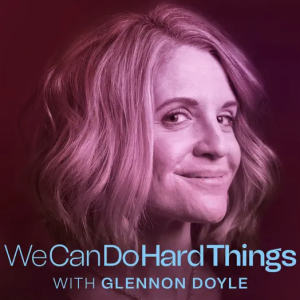
(:50) HOST: “If this podcast means something to you, it would mean so much to us if you’d be willing to take 30 seconds to do each or all of these three things.
First, can you please follow or subscribe to We Can Do Hard Things? Following the pod helps you because you’ll never miss an episode, and it helps us because you’ll never miss an episode. To do this, just go to the We Can Do Hard Things show page on Apple Podcasts, Spotify, or wherever you listen to podcasts, and then just tap the plus sign in the upper right-hand corner or click on follow. This is the most important thing for the pod.
While you’re there, if you’d be willing to give us a five-star rating and review and share an episode you loved with a friend, we would be so grateful. We appreciate you very much.”
Show endings often put a spotlight on show creators and production staff:

(:04) HOST: “I don’t think I know anybody else I’d rather talk more about this with than you right now”
(:03) GUEST: “Aw. That’s such a compliment. Thank you very much, Nick.”
(:04) [MUSIC PLAYS AT FULL STRENGTH THEN UNDER]
(:32) “Thanks again to Adam Sachs, Priyanka Mattoo and Anna Sale. Servant of Pod is written and hosted by me, Nick Quah. You can check out more episodes at LAist.com/servantofpod. Web Design by Andy Cheatwood and the digital marketing teams at Southern California Public Radio. Logo and Branding by Leo G., Thanks to the team at LAist Studios, including: Kristen Hayford, Taylor Coffman, Kristin Muller and Leo G. Servant of Pod is a production of LAist Studios.”
(:02) {MUSIC UP AND OUT}
There can be a reminder of how to find the podcast:

(:01) MUSIC FULL UP THEN UNDER
(:11) “For more Hidden Brain, please follow us on Facebook, Twitter, and Instagram. And if you know a friend who would like to hear our show, please tell them about the Hidden Brain. I’m Shankar Vedantam, see you next week.”
(:02) MUSIC FULL UP AND OUT
Other endings could be a brief wrap-up by the host of the major points covered in the podcast just heard, what’s coming up in future episodes, or a request for a podcast review. More on reviews are covered in Chapter 9.
Nonfiction podcasts greatly outnumber fiction podcasts even though the dramas are rooted in the radio shows that started in the 1940s. Successes like Welcome to Night Vale or The Amelia Project are difficult to do and expensive because they call for multiple creators and many more resources and costs.
Across the world, listening to fiction podcasts has grown 338% in Sweden, according to Spotify’s Nordic manager.
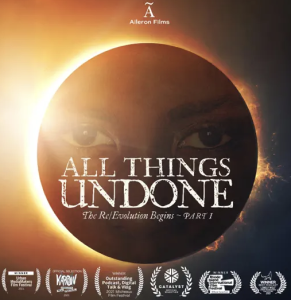
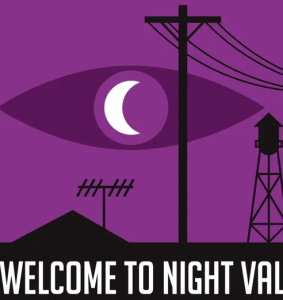
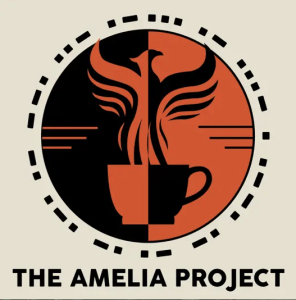
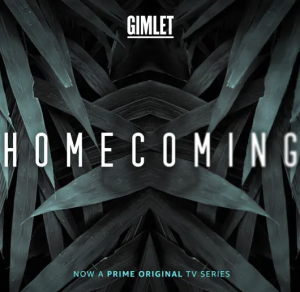

There are some terrific free online resources on how to create a fiction podcast. The Podcast Host offers a comprehensive guide on structure, writing, talent and so forth.
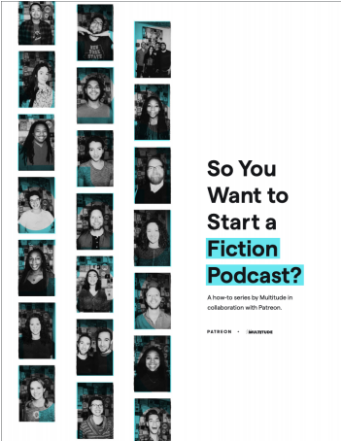
Multitude also offers a free downloadable PDF covering script development, assembling a team and legal issues.